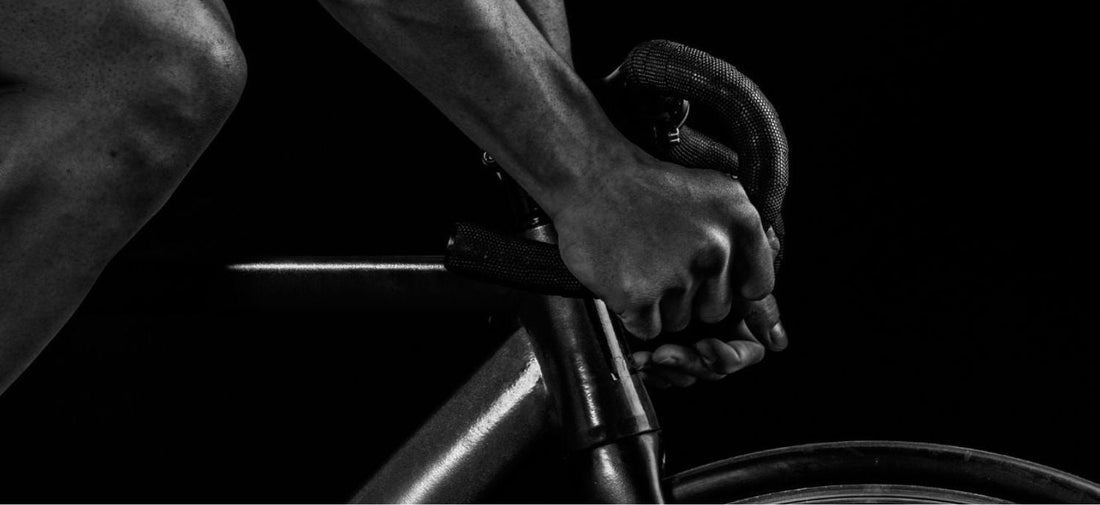
How to choose the best cycling insoles
Before we get into the subject of cycling insoles, we need to understand what the human foot is made for.
The human foot is designed for a variety of functions, including walking, running, and jumping, which require a lot of flexibility and movement in different directions. However, cycling presents a unique challenge for the feet because it places them in a fixed position and requires continuous, repetitive motion.

When cycling, the foot should primarily move in one direction—up and down (dorsiflexion and plantarflexion)—to ensure proper biomechanics and prevent discomfort or injury. This motion is necessary to generate efficient power transfer from the legs to the pedals, but it should not involve excessive side-to-side or rotational movements, which could lead to strain on the foot, ankle, or knee joints.
When it comes to improving your cycling performance, choosing the right insoles can make a big difference. The best insoles for cycling shoes are specifically designed to provide support, reduce numbness and improve power transfer to make every ride more comfortable and efficient.
Why cycling insoles matter
Many high-end carbon cycling shoes are designed for maximum performance and efficiency, with stiff, flat soles that effectively transfer power to the pedals. However, this design often comes at the expense of comfort and support for the foot, especially if the shoes are fitted with minimal, low-quality insoles.
These thin insoles, which often consist of only 1 mm of foam, have no function apart from covering the sole of the shoe. This is where good, high-quality cycling insoles come into play.
For this reason, many cyclists choose to upgrade their insoles to improve both comfort and performance.
Types of Insoles for Cycling
There are various types of cycling insoles available, and selecting the right one depends on your needs. Some key options include:
-
Performance Insoles: These insoles are typically more rigid and are designed to improve power transfer while providing some level of comfort and support. They are favored by professional cyclists and triathletes who are looking for performance benefits, often featuring advanced materials like carbon or fiber glass.
-
Custom-Molded Insoles: These insoles are molded specifically to your foot, either through a process of heat-molding or by using a 3D scan of your foot. However, be aware that even Custom-Molded insole need to be made of solid materials. Why? Please check our section “Why Solid materials are important for cycling insoles”
-
Gel / Foam Insoles: Soft, cushioned insoles may feel comfortable for short rides and they are more recommended for recreational cycling.

How to Select the Best Insoles for Your Needs
1. Arch Support
Whether you have a high, medium or low arch, the only important thing when choosing insoles is to get your foot into the neutral position and keep it there. Most companies have 3 different types of insoles for 3 different foot types, but using soft materials, these companies only give the feet a “bed”.
They do not optimize foot position or increase performance. This is why Solestar insoles are so unique and one of the best insoles for cycling. With a solid core that works on the entire foot (from the heel to the forefoot), the insoles optimize the foot position, bring the foot into the neutral position and keep it there due to the carbon core.
2. Material and Cushioning
Look for insoles made of durable materials that provide adequate cushioning. Foam or gel-based insoles are excellent for riders seeking maximum comfort, as they absorb shocks and reduce pressure on sensitive areas.
On the other hand, rigid options like carbon or plastic insoles offer enhanced support and stability, which can be ideal for competitive cyclists focusing on power transfer. High-quality materials also ensure the insoles maintain their shape and effectiveness over time, even with frequent use.
3. Cycling-Specific Features
The best cycling shoe insoles often include:
● Metatarsal Pads: To relieve forefoot pressure.
● HeelCups: For added stability.
● Ventilation: To keep your feet cool during long rides.
4. Sizing and Compatibility
Ensure the insoles fit well within your cycling shoes without altering their overall fit or causing discomfort. Many insoles come in multiple sizes, and some can be trimmed for a custom fit.
A proper fit ensures the insoles provide the necessary support and cushioning without creating pressure points or negatively affecting your pedaling efficiency. Take time to test the fit in your shoes before committing to ensure the best results.
Why Solid Materials Are Important for Cycling Insoles
If an insole is made from soft plastic, foam, or overly cushioned materials, it won't offer the necessary rigidity or structure to maintain the correct foot position over extended periods of cycling.
Here's why solid, stiff materials are essential for cycling insoles:
1.- Proper foot alignment and stability: The primary function of a cycling insole is to stabilize the foot, preventing excessive movement within the shoe. If the insole is made of soft materials, it will compress under the weight of the foot and won't maintain its shape, leading to foot slippage and improper alignment. This can lead to discomfort and even injuries over time.
Solid insoles (those made of rigid plastics or carbon fiber) optimize foot position, put into the neutral and keep the foot there throughout thelong ride. This stability ensures that the arch, heel, and toes are properly aligned, promoting an efficient pedal stroke and reducing unnecessary strain on the foot and lower body.
2.- Optimal Power Transfer: One of the main benefits of cycling shoes, especially those with stiff carbon soles, is the ability to transfer as much power as possible from the foot to the pedal. A soft, flexible insole will compress with each pedal stroke, which means that some of that precious power is lost. A solid insole, on the other hand, will not deform and will allow for direct, uninterrupted power transfer from the foot to the shoe, which is critical during high-intensity training or races.
3.- Avoiding Foot Fatigue and Discomfort: Soft, cushioned insoles, while comfortable at first, can contribute to foot fatigue and discomfort over long rides. Solid insoles, however, keep the foot firmly supported in one position, reducing unnecessary movement and helping to prevent those discomforts.
4.- Long-Term Durability: Soft foam insoles tend to lose their structural integrity over time, especially with the repetitive motion of cycling. They may break down or compress, leading to reduced support.
Rigid insoles, made from high-quality materials like carbon fiber or dense plastics, are far more durable and will maintain their structural support and performance even after many miles of cycling.

Conclusion
For cycling, insoles made from solid, stiff materials like carbon fiber are essential for supporting the foot, maintaining proper alignment, and maximizing power transfer. Soft, cushioned insoles may feel comfortable at first, but they lack the support and durability needed for optimal performance in long training sessions and races. By investing in high-quality, rigid cycling insoles, you can enhance your cycling experience, prevent discomfort, and improve your efficiency on the bike.
If you have more questions, contact us at: info@solestar.com

